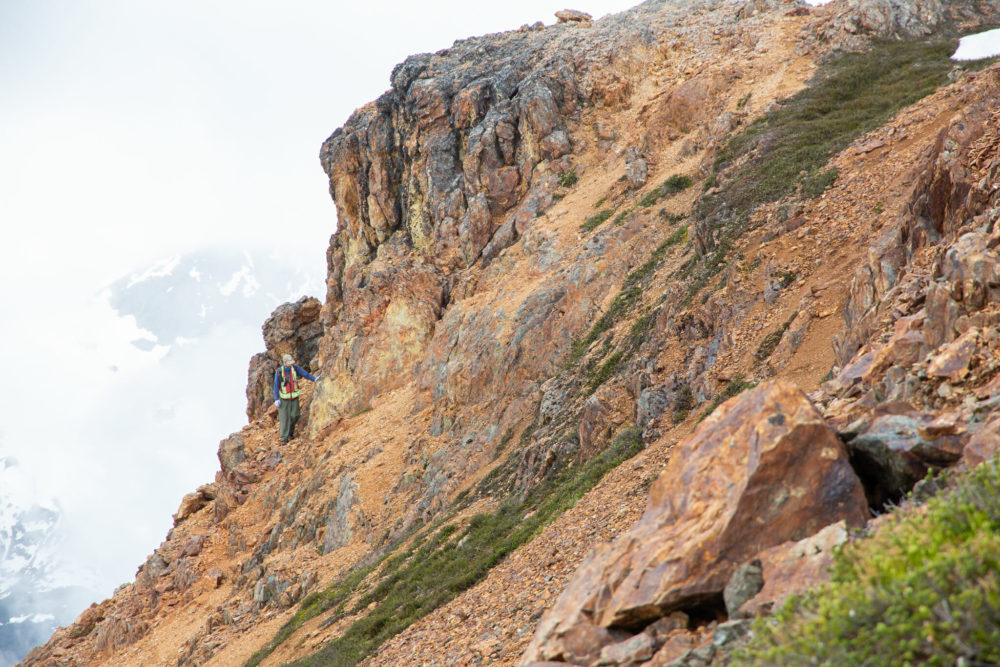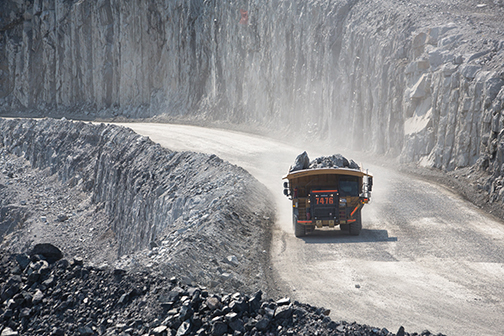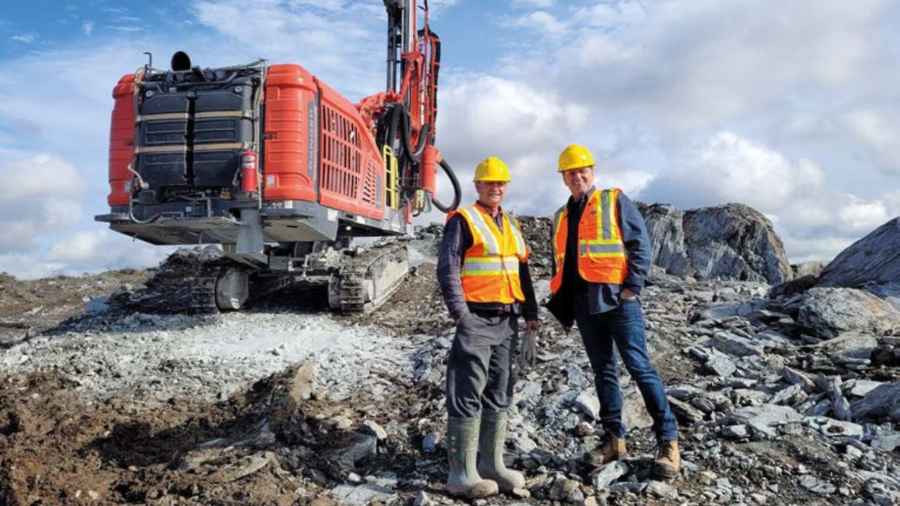Prairie power

NexGen Energy’s Rook 1 project. Credit: NexGen Energy
As the realization grows that nuclear energy has a part to play in a zero-carbon world, the uranium market is reviving. That means advanced projects in Saskatchewan’s Athabasca Basin are back in the spotlight after a rough, decade-long bear market.
CMJ used data from Mining Intelligence to pinpoint the uranium projects in the region with the largest resources that could be tapped to meet the expected surge of demand.
Here’s a closer look at the top three undeveloped uranium projects in the Athabasca.
Rook I – NexGen Energy
Since first listing on the TSX Venture Exchange in 2013, NexGen Energy has steadily advanced its Rook I project from discovery of the Arrow deposit in 2014, through a first resource in 2016, a preliminary economic assessment in mid-2017 and a prefeasibility study in 2018.
In February, it released a feasibility study for the project that underscores the project’s robust production potential and economics.
The feasibility for Rook 1, located in the southwest part of the Athabasca Basin, outlined a 10.7-year underground mine at Arrow.
The mine would produce an average of 21.7 million lb. U3O8 annually at an average annual operating cost of US$5.69. (Compare that with Cameco’s Cigar Lake mine, which has a production capacity of 18 million lb. per year.)
Preproduction capital costs are pegged at $1.3 billion, with sustaining capital (including decommissioning costs) at $432 million. The feasibility forecasts Rook I’s after-tax net present value (NPV) at $3.5 billion, using an 8% discount rate, and its internal rate of return (IRR) at 52.4%. The payback period is estimated at under one year.
Those base case numbers are based on a long-term price of US$50 per lb. uranium oxide. However, the project still has robust economics at US$40 per lb. U3O8, with the NPV declining to $2.5 billion and the IRR to 44%. At US$65 per lb. U3O8, the NPV rises to $4.9 billion and the IRR to 62.8%.
The study is based on reserves in the Arrow deposit, a basement-hosted deposit consisting of parallel, vertically stacked sheets of vein mineralization that is amenable to conventional, low-cost bulk mining methods. NexGen plans to use long-hole stoping, and to develop two shafts – one for production and personnel and the other for ventilation.
Probable reserves stand at 4.6 million tonnes grading 2.37% U3O8 for 239.6 million lb., using a cutoff grade of 0.3% U3O8.
Tests show that conventional processing including ore sorting and storage, grinding, acid leaching, counter current decantation (CCD), and solvent extraction will achieve an overall recovery of 97.6% uranium.
Tailings disposal will be in a purpose-built underground tailings management facility – significantly reducing the surface footprint of Rook 1 and eliminating the risk of a tailings dam failure.
Project would take 3.5 years to build, in addition to an early works period (ahead of any construction decision) of six months.
NexGen president and CEO Leigh Curyer is confident of demand for yellowcake from Arrow.
While the feasibility study considered a mine life of less than 11 years, the company is permitting Rook 1 for a 24-year mine life.
“The global energy matrix is undertaking an enormous shift that will rely heavily on nuclear energy to deliver the decarbonization commitment for today’s and future generations,” Curyer said in a release. “It is proven to be a safe, clean and most reliably efficient form of power generation known to humankind. With all major countries signalling significant infrastructure spending, and re-prioritizing green energy policy as their major focus over this coming decade and beyond, Rook I will be a material component in the delivery of those global objectives.”
The environmental assessment process is under way. NexGen expects to submit an environmental impact statement for Rook I in the second half of the year, as well as a licencing submission with the federal nuclear regulator Canada Nuclear Safety Commission (CNSC).
NexGen has already raised $172 million to support early construction works beginning in 2022.
Including Rook 1, the company holds more than 2,090 sq km in the southwest Athabasca basin.

Denison Mines’ Wheeler project. Right: ISR testing at Wheeler Credit: Denison Mines
Wheeler River – Denison Mines
Dension Mines’ flagship, 90%-owned Wheeler River project is located in the eastern Athabasca Basin, which contains a wealth of existing infrastructure, including its 22.5%-owned McClean Lake mill. JCU, a subsidiary of Overseas Uranium Development Co. (OURD) holds a 10% interest in Wheeler River.
According to a 2018 prefeasibility study, development of one of the two deposits at Wheeler River – the ultra high-grade Phoenix deposit – through in situ recovery (ISR) could give it ultra-low production costs of US$3.33 per lb. Although ISR mining accounts for about 50% of production globally, development of Phoenix using the technique would be a first for Canada.
The Wheeler River prefeasibility study looked at simultaneous development of the Phoenix and Gryphon deposits. While Phoenix would be developed as an ISR mine, Gryphon would be developed as a conventional underground mine employing long-hole mining, with ore processed at the McClean Lake mill.
With a preproduction capex of $332.5 million, Wheeler River would have a 14-year mine life, producing an average of 7.8 million lb. U3O8 annually. The study pegged the project’s base case pre-tax NPV at $1.3 billion (at a 8% discount rate) and its IRR at 38.7%. (After-tax figures were not provided since the owners are not subject to the same taxation rules.)
Development of Gryphon, with a capex of $623.1 million would be funded by cash flow from Phoenix.
Phoenix would average production of 6 million lbs. U3O8 per year over a mine life of 10 years, and all-in costs of US$8.90 per lb.
Gryphon is expected to produce 7.6 million lb. U3O8 annually over a 6.5-year mine life at all in costs US$22.82 per lb.
The study used a spot price of between US$29 and US$45 per lb. for Phoenix and a fixed price of US$50 per lb. for Gryphon.
“Based on an estimated production cost of US$3.33/lb U3O8 and relatively modest initial capital costs, the Phoenix operation is expected to have superior leverage to an anticipated recovery of the spot price of uranium – owing to the fact that the operation may not require a book of long-term contracts to support a development decision,” Denison president and CEO David Cates noted when the study was released.
The project contains probable reserves totalling 109.4 million lb. uranium oxide. Of that, Phoenix hosts 59.7 million lb. in 144,000 tonnes grading 19.1% U3O8, while Gryphon hosts 49.7 million lb. in 1.3 million tonnes grading 1.8% U3O8.
Denison plans to combine several proven technologies in ISR mining, ground freezing and horizontal directional drilling to create a novel model for ISR mining at Phoenix, which has a unique geological setting, straddling the sub-Athabasca unconformity in permeable ground.
Mining at the deposit will involve injecting an acidic mining solution into Phoenix via a series of cased drill holes (injection wells). The solution will dissolve the uranium and be pumped back to surface through recovery wells to recover the uranium.
To avoid any possible interaction with ground water, contain the solution within the deposit and maximize recovery, Denison will use ground freezing technology to create an isolated mining chamber with impermeable barrier on all sides.
In addition to being a low cost mining method, in situ recovery also offers environmental benefits, including generating zero tailings, and the potential to eliminate any water discharge to surface water bodies.
Denison restarted the EA process for Wheeler River in January after it was temporarily suspended last March due to the pandemic. It’s been under way since December 2018.
While the prefeasibility study assumed the start of preproduction operations at Phoenix in 2021 and first production in 2024, Denison expects to revise that timeline in light of the pandemic interruption.
The decision to go ahead with a feasibility study hasn’t been made yet, however Denison had $95 million in cash and investments in May – enough to see it through the EA process and a feasibility study. The company also raised US$86.3 million in March to acquire an inventory of physical uranium to support the development of Wheeler River.
In the meantime, the company has started ISR wellfield tests and metallurgical ISR pilot plant tests.
And at presstime in May, Denison had just made a move to acquire JCU for its Wheeler River stake. The cash offer of $40.5 million trumps a $12.5-million deal UEX Corp. clinched less than two weeks earlier to acquire JCU.
UEX says under its agreement with OURD, the company’s board of directors is obligated to recommend its bid to shareholders at a meeting set for June 18.

At the core shack at Fission Uranium’s Patterson Lake South project. Credit: Fission Uranium
Patterson Lake South – Fission Uranium
Fission Uranium’s Patterson Lake South (PLS) project in the southwest Athabasca Basin hosts the Triple R deposit, discovered in 2012.
A 2019 prefeasibility study for the project, located 550 km northwest of Prince Albert, looked at an underground only development scenario for PLS. Compared to another prefeasibility released earlier the same year that considered an open pit and underground operation, the study cut both capex (by 21%) and development time (by a year). Open pit mining would have required the construction of a ring dyke to access portions of the deposit that are located under Patterson Lake.
Instead, Fission plans to access the shallow deposit, which is located at a depth of about 50 metres, via decline only.
The project carries a $1.2-billion capex for a seven-year mine producing 1,000 tonnes per day. Total life-of-mine production would be 78.7 million lb. of U3O8, with production over the first five years averaging 13.1 million lb. per year. The study, which used a US$50 per lb. U3O8 price, put operating costs at US$7.28 per lb. U3O8. Construction would take three years.
The study projects an after-tax NPV of $702 million (using an 8% discount rate) and an IRR of 25%, with payback occurring in 2.5 years.
Conventional processing – including grinding, leaching, CCD, solvent extraction and yellowcake precipitation – is expected to yield recoveries of 96.8%.
A feasibility is under way and expected to be complete in late 2022. The company expects permitting to go to the end of 2026, with construction potentially starting at that time.
Fission is also conducting a 43-hole (12,640-metre) drill program this year at Triple R, which contains five zones. The company believes there is potential to grow the mine through exploration as the basement hosted, structurally controlled, sub-vertical, high-grade deposit. Triple R, part of a 3.2-km mineralized trend at PLS, remains open in several directions.
Triple R contains indicated resources of 2.2 million tonnes grading 2.1% uranium oxide for 102.4 million lb. U3O8 at a cutoff rate of 0.25% U3O8. Inferred resources add 1.2 million tonnes grading 1.22% for 32.8 million lb.





Comments